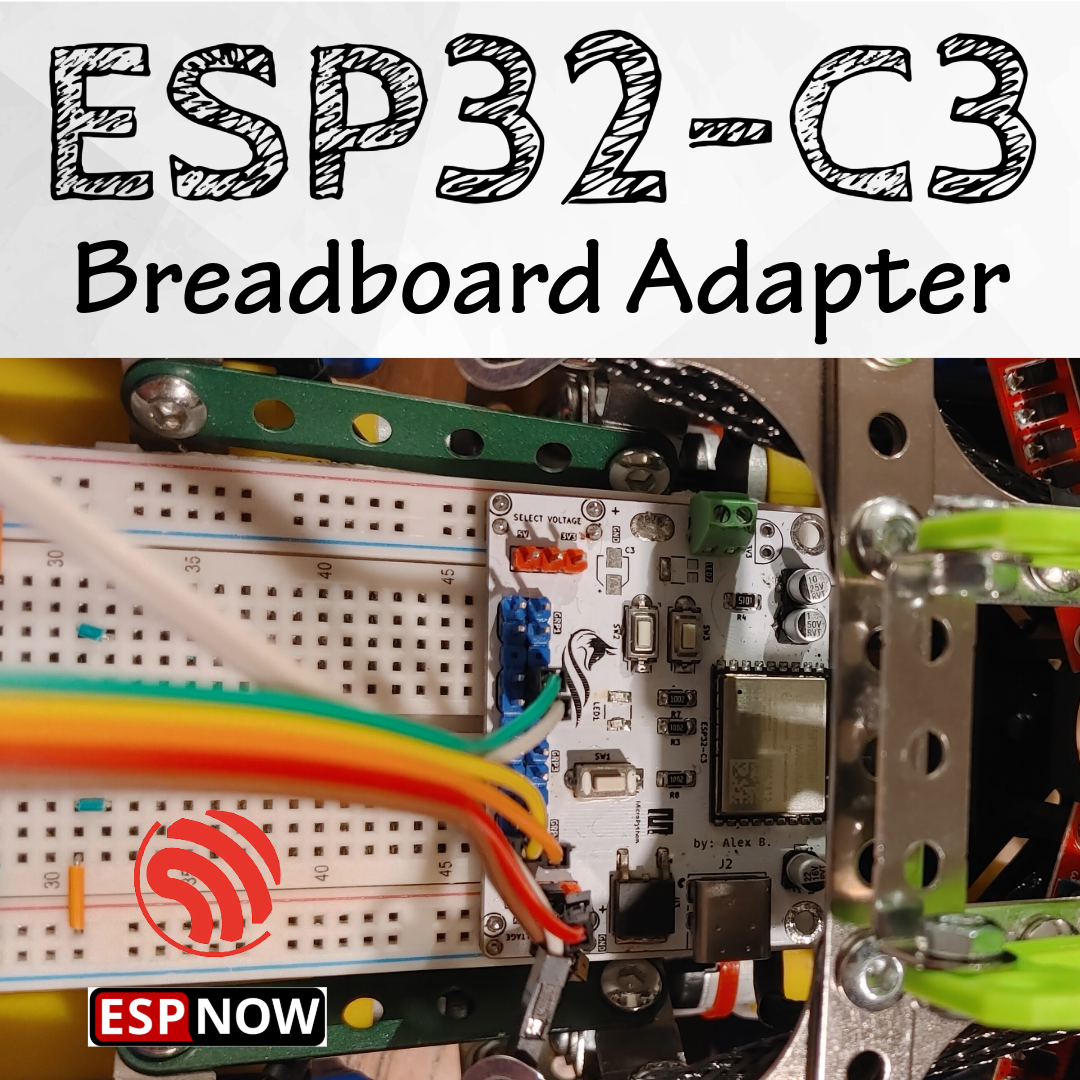ESP32-C3 Breadboard Adapter

Discover new possibilities with the ESP32-C3 UNO Development Board.
Unlock a world of innovative possibilities with the ESP32-C3 Breadboard Development Board. This versatile platform empowers developers to create cutting-edge applications, leveraging its advanced features and robust performance. Whether you're working on IoT projects, embedded systems, or automation tasks, the ESP32-C3 Development Board offers the flexibility, power and quick implementation needed to bring your ideas to life.
Explore its capabilities and push the boundaries of your creativity and technical expertise. https://gitea.techquadbit.net/alex/ESP32-C3_Breadboard-Adapter

Key Features
- compact size; requires a very little space on a breadboard
- flash a firmware without external adapters as you work with your project
- supplies 3.3V or 5V to the breadboard power rails
- can be powered either by USB-C or external power supply
- GPIOs are arranged into 4 groups for easier identification
- on-board power and user-controlled LEDs
- on-board RESET and BOOT push-button switches
Features and Specifications of the ESP32-C3 WROOM Module
Core Components:
- Microprocessor: RISC-V® single-core 32-bit microprocessor, operating up to 160 MHz.
- Memory:
- 384 KB ROM
- 400 KB SRAM
- 8 KB SRAM in RTC
Connectivity:
- Wi-Fi:
- 802.11b/g/n, up to 150 Mbps (802.11n), frequency range: 2412 ~ 2484 MHz
- Four virtual Wi-Fi interfaces
- simultaneous support SoftAP mode, Station + SoftAP mode and promiscuous mode
- Bluetooth:
- Bluetooth 5, Bluetooth mesh, 125 Kbps, 500 Kbps, 1 Mbps, 2 Mbps
- Features: Advertising extensions, multiple advertisement sets, channel selection algorithm #2
- Co-existence mechanism: Internal co-existence mechanism between Wi-Fi and Bluetooth to share the same antenna
Security:
- RSA-3072-based secure boot and the AES-128/256-XTS flash encryption Peripherals:
- GPIOs: Up to 22 GPIOs, including 4 strapping GPIOs
- Interfaces:
- SPI
- Two UART
- I2C
- I2S
- LED PWM, up to 6 channels
- Full-speed USB 2.0 OTG
- USB Serial/JTAG controller
- TWAI® controller (compatible with ISO 11898-1)
- 12-bit ADC, up to 6 channels
- Touch sensor
- Temperature sensor
- Two 54-bit general purpose timers
- Three digital and one analog watchdog timers
Integrated Components:
- Crystal Oscillator: 40 MHz
- Flash: Up to 16 MB Quad SPI flash
- Antenna: on-board PCB antenna
Operating Conditions:
- Operating Voltage: 3.0 ~ 3.6 V
- Ambient Temperature: –40 ~ 65 °C
Certifications: RF Certification: Various certifications available Green Certification: RoHS/REACH compliant
Applications: Ideal for AI and Artificial Intelligence of Things (AIoT) applications such as: Wake word detection Speech commands recognition Face detection and recognition Smart home devices Smart appliances Smart control panels Smart speakers.
Reserved GPIOs and Pins
| GPIO | ESP32-C3 Module Pin | DevBoard Pin | Designation |
|---|---|---|---|
| EN | 1 | 2 | Enable Pin |
| IO9 | 8 | 8 | Strapping Pin |
| IO8 | 5 | 7 | Strapping Pin |
| IO18 | 11 | 13 | USB D- |
| IO19 | 9 | 14 | USB D+ |
| IO10 | 7 | 10 | On-board user LED |
| IO3 | 13 | 15 | On-board user button |
I2C Pins
The schematic excerpt provided below illustrates the wiring configuration for the SDA and SCL lines. Specifically, the SDA line is connected to GPIO 8, while the SCL line is connected to GPIO 9 on the ESP32-C3 Wroom module.

The image of the PCB board below depicts the physical locations of the SDA and SCL terminals.

KiCAD PCB, Schematic files and more on GitHub: https://github.com/alexandrebobkov/ESP32-C3_Breadboard-Adapter


